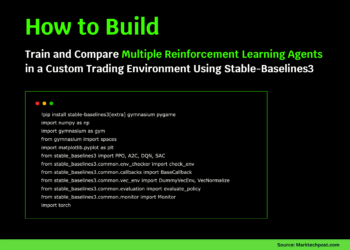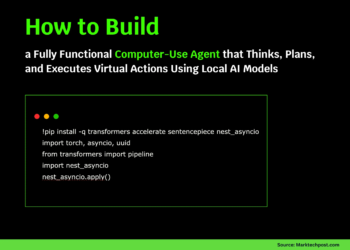![[MLM] The Bias-Variance Trade-Off: A Visual Explainer](https://machinelearningmastery.com/wp-content/uploads/2025/08/mlm-priya-bias-variance-trade-off-visual-explainer.png)
The Bias-Variance Trade-Off: A Visual Explainer
Image by Editor | ChatGPT
Introduction
You’ve built a machine learning model that performs perfectly on training data but fails on new examples. Or maybe your model consistently makes the same type of error regardless of how you train it. Sound familiar? Understanding bias-variance trade-off can help explain some of these behaviors of machine learning models.
In this article, you’ll understand exactly what bias and variance mean, how to spot them in your models, and more importantly, how to fix them. Let’s get started.
Understanding Bias and Variance
Imagine you’re training a model to predict house prices. You collect data, build your model, and test it. But here’s what most people don’t realize: your model’s errors come from three sources, and understanding these sources is the key to building better models.
Bias is systematic error. If your model consistently predicts house prices that are $50,000 too low, regardless of the actual house, that’s bias. Your model has learned the wrong pattern or is too simple to capture the real relationship in the data.
Variance is inconsistency. If you train the same model on slightly different datasets and get wildly different predictions for the same house — sometimes \$300K, sometimes \$600K — that’s variance. Your model is extremely sensitive to very small changes in the training data.
Irreducible noise is the random error that no model can eliminate. Some variation in house prices comes from factors you’ll never be able to measure or predict.
Every model’s prediction error breaks down into exactly these three components:
Total Error = Bias² + Variance + Irreducible Noise
This equation explains that to minimize error, we need to minimize both bias and variance. But here’s the catch: they usually move in opposite directions. Reduce one, and the other often increases. This is the bias-variance trade-off.
Understanding the Four Bias-Variance Combinations
Every machine learning model falls into one of four categories based on its bias and variance levels. Now let’s understand the four different possibilities where bias and variance can each be low or high using a simple dartboard analogy.
High Bias, Low Variance (Underfitting)
Picture someone who always throws their darts in the same spot, but that spot is way off from the bullseye. Every throw lands in roughly the same area, just not where it should be.

High Bias Low Variance
Image by Author | diagrams.net (draw.io)
In machine learning, this is like a model that consistently underfits your data. Say you’re trying to fit a straight line to data that’s in spherical clusters. No matter how many times you train the model, it will always make the same type of error because it’s too simple to capture the real pattern.
What it looks like: Your model makes consistent, predictable errors. Training accuracy is poor, but if you retrain the model multiple times, you get similar (bad) results each time.
When this happens: You’re using a model that’s too simple for your data. Common causes include using linear regression for clearly non-linear relationships, having too few features, or over-regularizing your model.
Example: Predicting house prices using only square footage with linear regression, when the relationship is clearly non-linear. Your model will consistently underestimate prices of large houses and overestimate small ones.
How to identify: Training error is high (above acceptable threshold). Validation error is also high and very close to training error. Learning curves show both training and validation error plateauing at high values.
Low Bias, High Variance (Overfitting)
Now imagine someone whose darts, on average, hit near the bullseye. But individual throws are all over the place. One throw hits the bullseye, the next misses the bullseye entirely.

Low Bias High Variance
Image by Author | diagrams.net (draw.io)
This happens when your model is complex enough to learn the underlying pattern but is extremely sensitive even to small changes in the training data. It overfits, memorizing noise instead of learning the real signal.
What it looks like: Your model performs excellently on training data but poorly on new data. Retraining on different samples of the same dataset produces very different models with very different predictions.
When this happens: Your model is too complex for the amount of training data you have. It memorizes noise instead of learning generalizable patterns. Common with deep neural networks on small datasets or decision trees without pruning.
Example: A neural network with 1000 parameters trained on 100 house price examples (you don’t need a neural network for this!). It perfectly memorizes the training data but fails completely on new houses because it learns meaningless noise patterns.
How to identify: Training error is very low, but validation error is much higher. Large gap between training and validation performance. Learning curves show training error continuing to decrease while validation error increases or stays high.
High Bias, High Variance (Worst Case)
This is like someone who not only can’t aim properly but is also inconsistent about where they miss. Their throws are scattered AND systematically off-target.

High Bias High Variance
Image by Author | diagrams.net (draw.io)
In machine learning, this unfortunate combination usually happens when you have a fundamentally flawed model architecture or approach. The model is both too simple to capture the pattern and unstable in its predictions.
What it looks like: Your model performs poorly on training data and is inconsistent across different training runs. This is the worst possible scenario.
When this happens: Fundamental problems with your approach. Wrong algorithm for the problem, severe implementation bugs, or completely inappropriate feature engineering.
Example: Using a model trained on temperature data to predict numerical house prices or something similar.
How to identify: Both training and validation errors are high. Model performance varies significantly across different training runs even on the same data. Something is fundamentally wrong.
Low Bias, Low Variance (The Goal)
This is what we aim for. Imagine someone whose darts consistently cluster tight around the bullseye. Each throw is close to the target, and all throws are close to each other.

Low Bias Low Variance
Image by Author | diagrams.net (draw.io)
This is what we aim for in machine learning: a model that captures the true underlying pattern without being overly sensitive to changes in the training data.
What it looks like: Your model performs well on training data and maintains that performance on new data. Retraining produces consistent results.
When this happens: Your model captures the underlying pattern but does not memorize the noise either.
Example: A well-tuned Random Forest model that uses appropriate features, proper cross-validation, and the right amount of regularization.
How to identify: Both training and validation errors are acceptably low. Small gap between training and validation performance. Consistent results across multiple training runs.
Putting it all together, we have:

Bias Variance Quadrants
Image by Author | diagrams.net (draw.io)
Fixing High Bias (Underfitting)
Add Model Complexity
Move from simple to more complex models. Replace linear regression with polynomial regression. Use deeper neural networks. Add more parameters to your model.
The key insight: your current model cannot represent the true underlying pattern in your data. You need more expressive power.
Feature Engineering
Add more relevant features to your dataset. Create interaction terms between existing features. Apply domain knowledge to extract meaningful patterns the model can learn.
Sometimes the issue isn’t model complexity but that you haven’t given the model the right information to learn from.
Reduce Regularization
If you’re using regularization techniques like L1/L2 penalties or dropout, reduce their strength.
Train Longer
For iterative algorithms like neural networks, increase the number of training epochs. Some models need more time to converge to the optimal solution.
Fixing High Variance (Overfitting)
Get More Training Data
This is often the most effective solution. More data gives your model more examples to learn from and reduces the chance it will memorize noise.
The relationship is mathematical: variance decreases proportionally with training set size. Double your data, roughly halve your variance.
Add Regularization
Introduce constraints that prevent your model from becoming too complex. L1 regularization removes unimportant features. L2 regularization reduces the magnitude of model parameters. Dropout randomly ignores neurons during training.
These techniques force your model to learn simpler, more generalizable patterns.
Reduce Model Complexity
Use fewer features through feature selection. Choose simpler architectures. Reduce the number of learnable parameters.
The goal is to limit your model’s ability to memorize noise while preserving its ability to learn real patterns.
Ensemble Methods
Train multiple models on different subsets of data and combine predictions from them. Random Forest does this automatically. Bagging and boosting are other ensemble approaches.
Ensembles reduce variance through averaging – individual models may make different errors, but their average is more stable.
Early Stopping
For iterative training algorithms, stop training when validation error starts increasing, even if training error continues decreasing. This prevents the model from memorizing training data.
Practical Implementation Guide
Step 1: Establish Baseline Performance
Start with the simplest reasonable model for your problem. This gives you a baseline and helps identify whether you need more or less complexity.
For regression: start with linear regression. For classification: start with logistic regression.
Step 2: Plot Learning Curves
Plot the training and validation errors against training set size. This immediately tells you whether you have bias or variance problems.
If curves haven’t converged and there’s a gap, you likely have variance issues. So add more data or reduce complexity.
If curves converge to high error values, you likely have bias issues. In this case, you can try to increase complexity.
Step 3: Systematic Complexity Adjustment
If you identify high bias, systematically increase complexity. Add features, use more flexible models, reduce regularization. Monitor validation performance to avoid going too far.
If you identify high variance, systematically reduce complexity. Add more data, use simpler models, try adding regularization, and try to use better features.
Step 4: Cross-Validation for Assessment
Use k-fold cross-validation to get robust estimates of your model’s performance. High variance in the cross-validation scores indicates that there still are issues.
Step 5: Iterate and Refine
Model development is iterative. Each change affects the bias-variance balance. Continuously monitor and adjust based on learning curves and validation performance.
Conclusion
The bias-variance trade-off isn’t just theoretical knowledge. It’s a practical framework for building better models. Every time you adjust regularization, change algorithms, or modify features, you’re navigating this trade-off.
So the next time you’re building a model, ask yourself:
- Are my predictions consistently off in one direction? (High bias)
- Do my predictions vary substantially between training runs? (High variance)
- What can I adjust to find the right balance?
The goal is to find the model that makes the best trade-off between being right on average and being consistent in individual predictions.
With this understanding, you can systematically improve any machine learning model by making informed decisions about complexity, regularization, and data requirements.


















